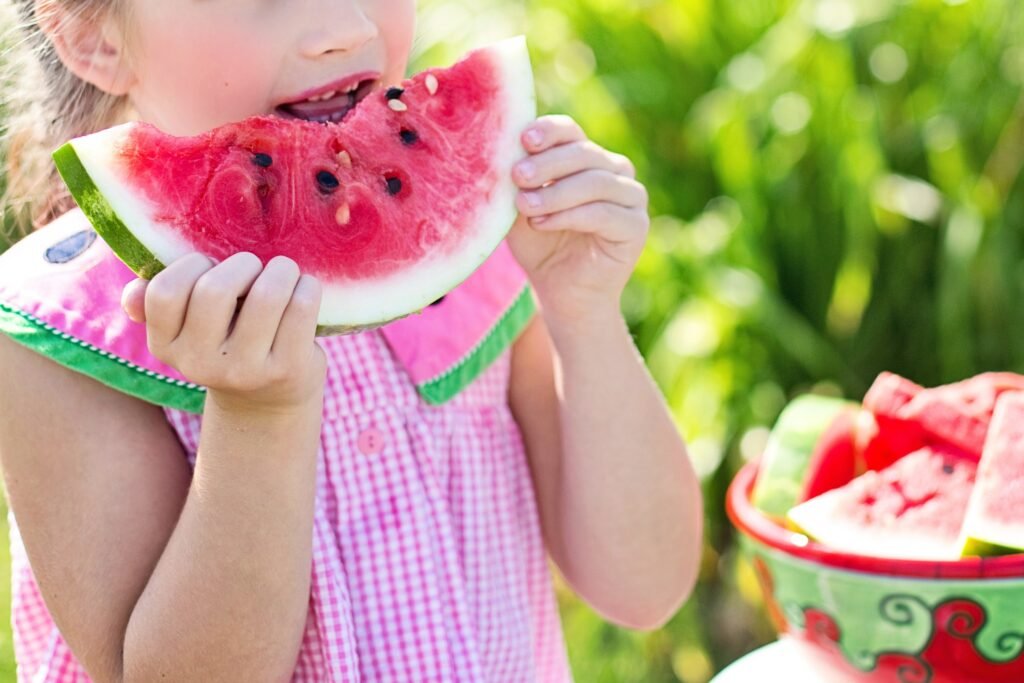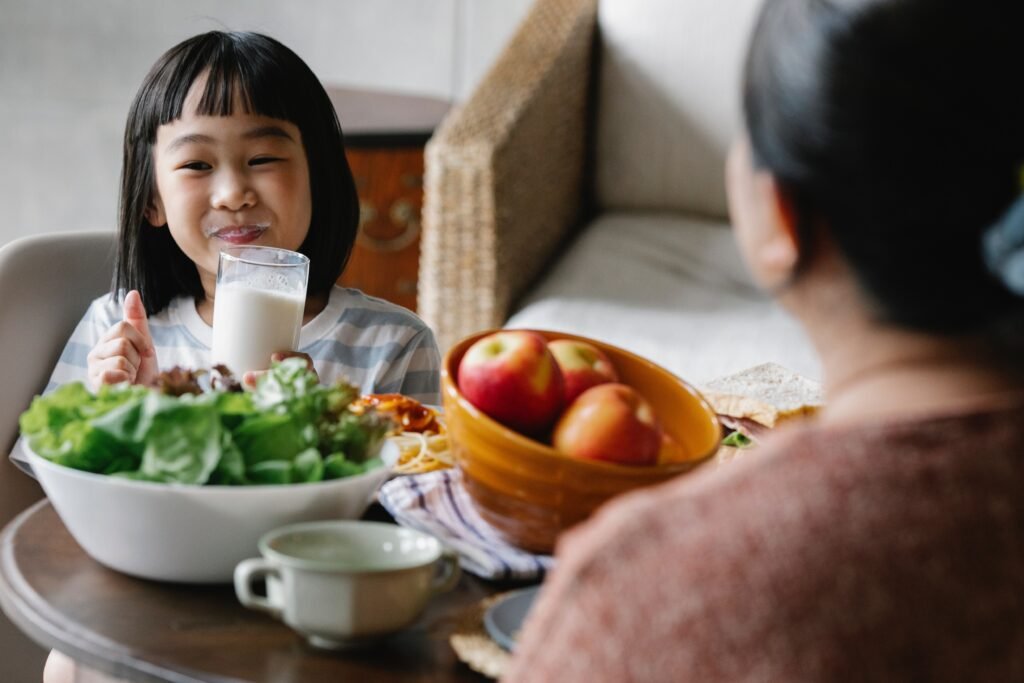What would a typical meal of a five-year-old look like? Ideally, it should comprise meals from all the five healthy food groups: vegetable, fruit, grain foods, dairy and protein with a low amount of salt, fats, sugar and high fibre. But do we adhere to the standard? In today’s fast-paced world, it indeed comes as no surprise that fast food is an on-the-go meal.
From high fructose breakfast cereals to high fat and salt corndog for lunch, no parent saw the health risk associated with the processed food coming. Fresh fruits and vegetables are no different stories either, with pesticides and Genetically engineered crops widely available at the grocery store. Food recall has become a norm. Our children are treated as test tubes, and we should not be aloof from the fact.

Hungry Children Can’t Learn! Malnourished Children Can’t Think!
Ann Cooper, BVSD Director of food services, popularly known as a lunch lady, advocates for providing regionally sourced organic and sustainable meals to the children. Her TED talk is an eye-opener for parents and facilitators to the food quality they are feeding their children. One of Ann’s most significant online resources is the lunch Box project. It aims to aid schools to improve their meals and involve students in the process. As a mom and childhood educator, I was moved by Ann’s stance on providing healthy food for children starting from the grass-roots level. It meant serving the right food at home as well as in schools. But first, let’s glance at the shocking truth that studied reveal.
Some Alarming Facts About The Food Industry
The gravity of the matter can be gauged from Centers for Disease Control and Prevention(CDC) prediction. It states that 1 in 3 children born in the United States are likely to develop the type 2 diabetes at some point in the life. There is a high probability of the stats being proven unless children improve diets and get more exercise.
Synthetic Dyes Added In Food
US Food companies add about 15 Million pounds of eight synthetic dyes to the food supply every year. The sad part is that the Food and Drug Administration (FDA) has made little effort to address the problem. The result is cancer is the leading cause of death in children.
GMOs/GEs And Various Diseases
The biotech industry has done no favour on our children’s health either.Research shows that more than 75% of processed foods, right from soup to soda on the supermarket shelves, contain GEs (Genetically engineered foods). The sad part is that so-called natural produce is not spared. In the US, 92% of corn and 94% of soybeans are affected by GE. The prevalence of GE and GMOs (Genetically Modified Food) has contributed to the increase in allergies, asthma, ADHD, autism. In addition, childhood obesity has tripled in the past 25 years.

Marketing Trap
Children have brains as absorbent as sponges. Food companies leave no opportunity to exploit younger minds through marketing. Food and beverage companies spend around $1.8 billion each year marketing food brands, starting from 2-year-olds. Unfortunately, instead of aiming at fruits and vegetables, the ads focus on high saturated, trans fats, sodium, and sugar foods. What more, an attractive give away toy and a cartoon character influence the children’s choice for unhealthy foods.
Antibiotics Polluting Our Food System
It’s a sad state that livestock and poultry rely on the 80 percentof antibiotics sold across the US. Research states, by 2050, that antibiotic resistance will cause approximately 10 milliondeaths per year. That is the rate higher than cancer.
Control And Power:
10 CORPORATIONS CONTROLS 90% OF OUR FOOD SUPPLY. With a so-called monopoly, it’s easy for the giants to control the unhealthy market dynamics and exploit children’s health. Parents and children have fewer options to choose from in terms of nutritious food as these market giants abide by their rigid policies.

Change The Way We Feed Our Children
If reading the aforementioned stark reality makes you feel guilty, the good news is we have ways to fix the damage as you read along. Ann Cooper proposed revolutionary guidelines to bring an end to the unhealthy lifestyle for our children.
- Salad Bar at Schools. What better way to teach healthy eating habits than to have a nutritious, colourful salad bar in the school?
- Education: cooking classes and chef competitions. We can’t teach kids about food unless we don’t cook with them
- Gardening classes, gardens in every school, learning about food as part of the curriculum, universal breakfast after the bell.
- Trying to connect kids with farmers so the children understand the significance of buying locally grown produce. Moving from conventional purchasing toward sustainable products, i.e. purchasing real whole, nutritious farm-fresh food.
- Introduce organic food. This means food without GEs/GMOs, dyes, pesticides. In other words, all pure and natural.
- In the case of GE’s/ GMOs, advocate for labelling it loud and clear in products. For antibiotics, raise your voice at FDA to bring an end to the malpractice.
- Articulate and inculcate the big Don’ts of food: No processed food, no deep-fried food, no trans fat, no high fructose corn syrup, possibly no refined sugar and refined flour, no soda candy and chips, no antibiotics, no hormones, no colour additives, no chocolate milk.
- Instil the Do’s of food: Drink healthy cold white milk, unlimited free water, reusable dishes, glasses and silverware, work in the garden, garden tasting is ok, salad bars in every school, whole-grain meal, recess before lunch, support local farms, mandatory cooking and food literacy.
A parent or a caregiver would give in the best to nurture the child. They would go the extra mile to provide the finest quality, be it for everyday needs as food and education or long-term plans. In Ann’s words, every single of us can make a difference in the world. It should be a birthright that every child should have healthy food and that no child is hungry!
Want to have an insight about adults healthy eating pattern? Click Here.
Here2Help is a community tech organization focused on innovative solutions to ensure the growth of resilient communities generations into the future. Are you a community-minded individual interested in sharing your skills to help empower your community? We would love to hear from you to collaborate! Contact us if you’re interested in working with us or hosting a workshop on the Here2Help platform.
We are a registered not-for-profit run entirely through volunteer support. Any contribution goes a long way in helping us reach our goal of healing communities from within. Visit our Donate page to learn more about how your contribution can make a real difference.
Did you enjoy this article? Share it on social media to help us make a collective impact!
